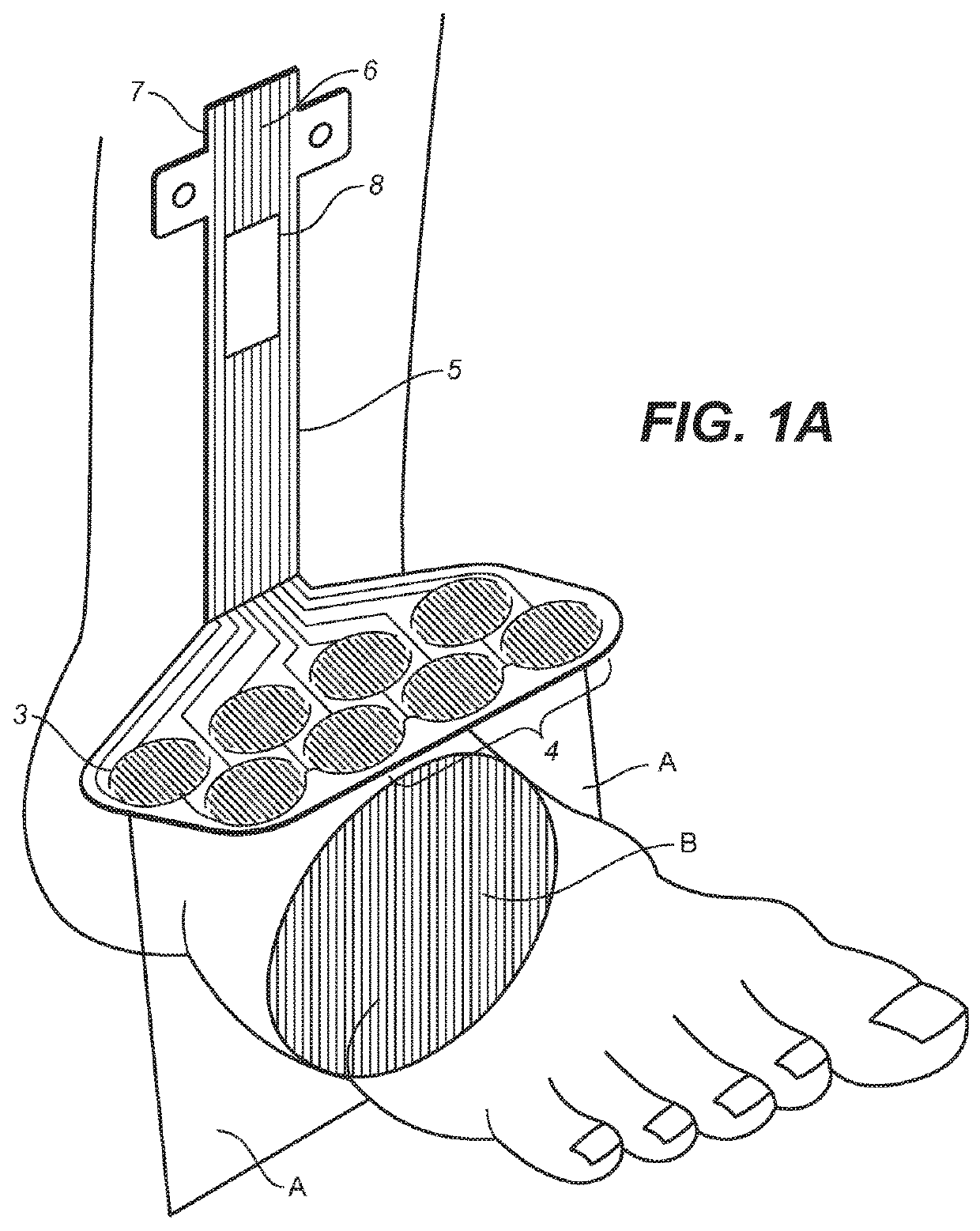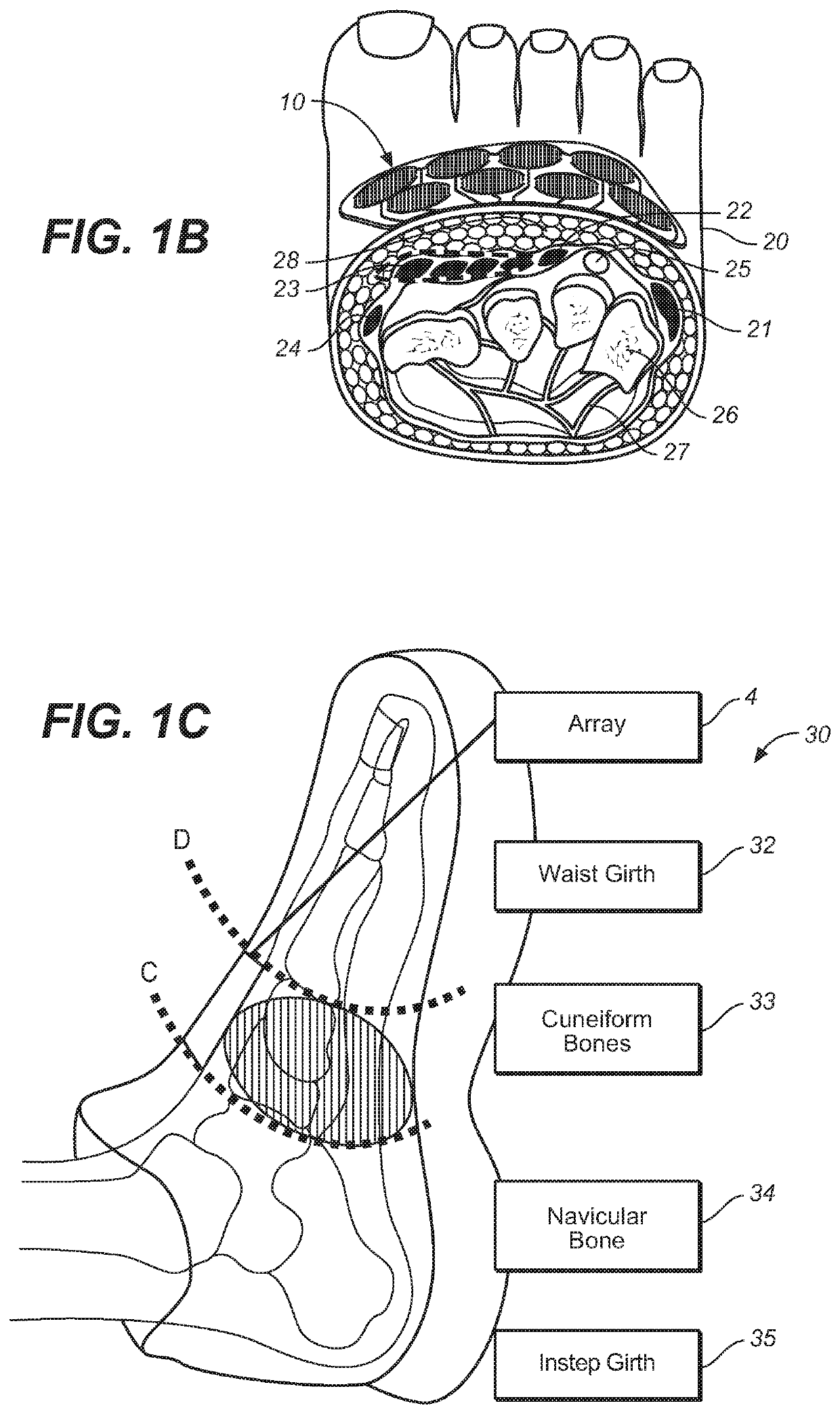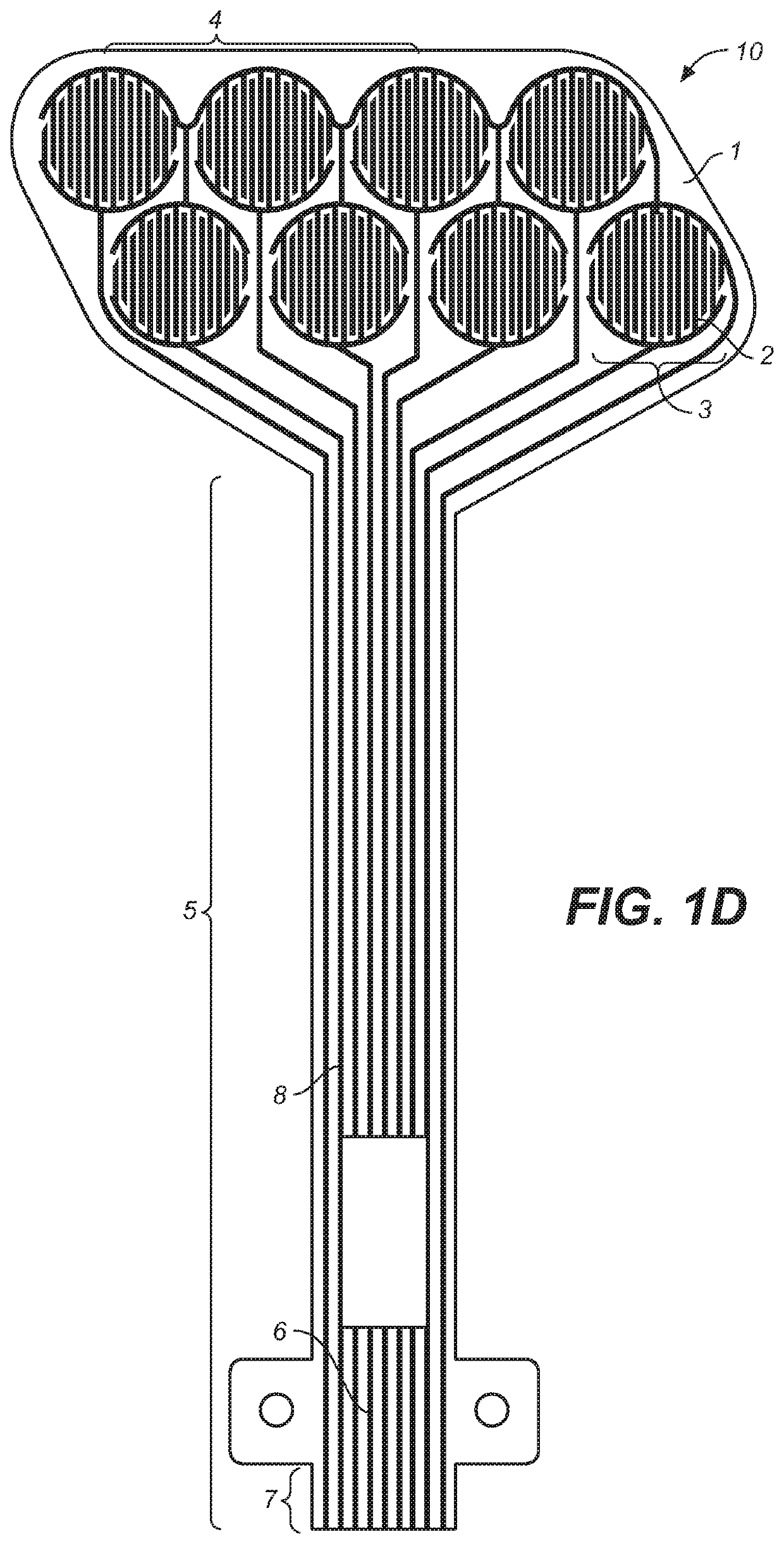Wearable footwear sensor arrays for detection of cardiac events, body motion, and muscular actions
a wearable, sensor array technology, applied in the field of foot-based wearable systems, can solve the problems of poor long-term wearability, rigid sensors and the materials holding the sensors, and many limitations still presen
- Summary
- Abstract
- Description
- Claims
- Application Information
AI Technical Summary
Benefits of technology
Problems solved by technology
Method used
Image
Examples
Embodiment Construction
[0039]Human feet contain rich vasculature and characteristic bones and muscles that enable a wide range of motion and activities that sustain daily living. The foot also withstands incredible forces and retains strength and flexibility through a wide range of functions such as standing and walking. Because the foot is so intimately involved in a wide range of human activities, it is an ideal location to measure the cardiac and physiological functions that accompany these activities. Two major arterial branches passing towards the foot, i.e., dorsalis pedis artery and posterior tibial artery. The pulsations of both arteries can be directly detected and are known as an indicator of peripheral vascular health. The present invention takes advantage of the ability to locate a sensor array adjacent to the physiologic structures as shown in FIG. 1A. Referring specifically to FIG. 1A, the sensor array component 10 of the invention is comprised of a substrate 1 and iontronic sensing element ...
PUM
 Login to View More
Login to View More Abstract
Description
Claims
Application Information
 Login to View More
Login to View More - R&D
- Intellectual Property
- Life Sciences
- Materials
- Tech Scout
- Unparalleled Data Quality
- Higher Quality Content
- 60% Fewer Hallucinations
Browse by: Latest US Patents, China's latest patents, Technical Efficacy Thesaurus, Application Domain, Technology Topic, Popular Technical Reports.
© 2025 PatSnap. All rights reserved.Legal|Privacy policy|Modern Slavery Act Transparency Statement|Sitemap|About US| Contact US: help@patsnap.com



